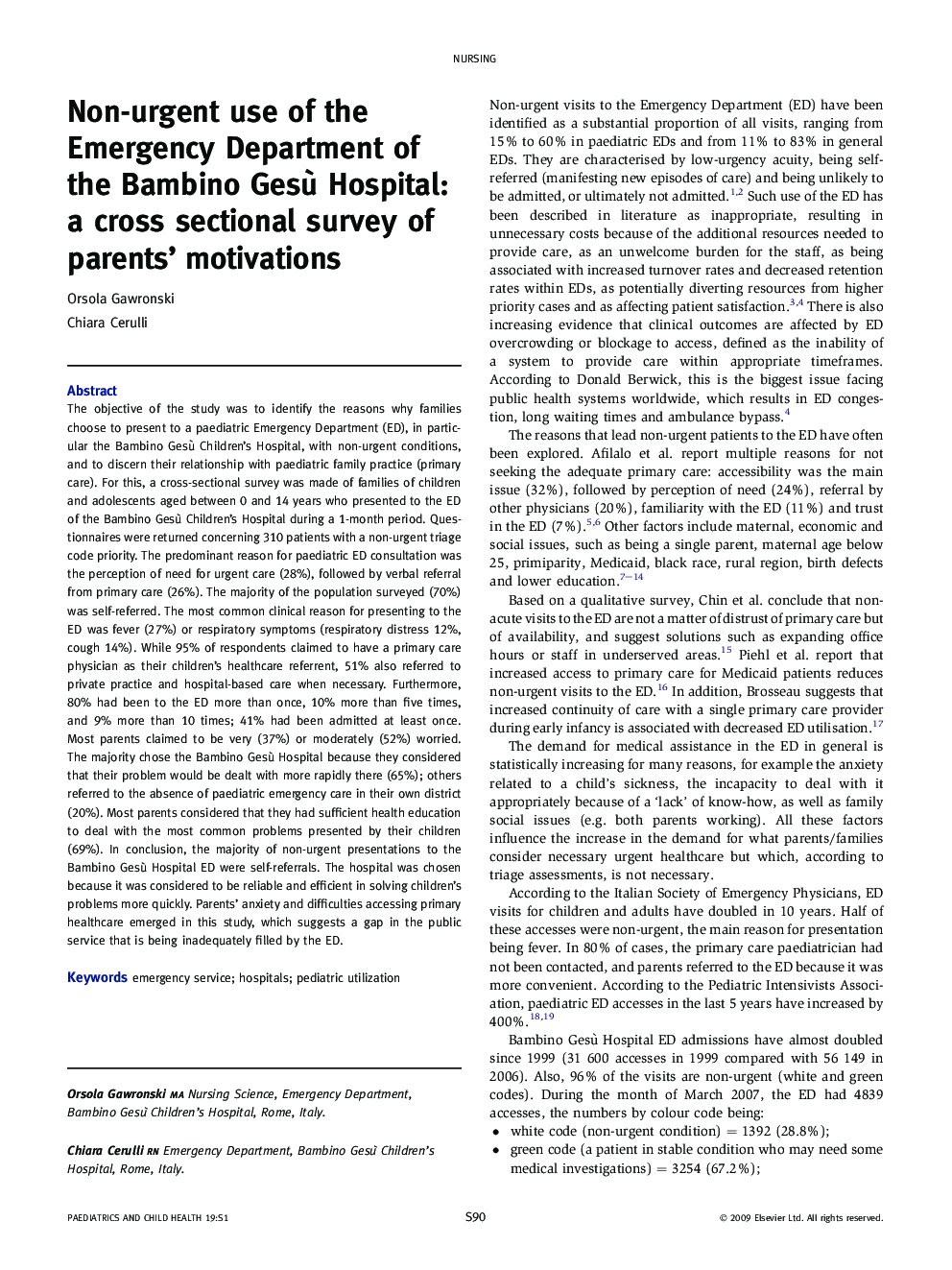| Article ID | Journal | Published Year | Pages | File Type |
|---|---|---|---|---|
| 4173365 | Paediatrics and Child Health | 2009 | 4 Pages |
The objective of the study was to identify the reasons why families choose to present to a paediatric Emergency Department (ED), in particular the Bambino Gesù Children's Hospital, with non-urgent conditions, and to discern their relationship with paediatric family practice (primary care). For this, a cross-sectional survey was made of families of children and adolescents aged between 0 and 14 years who presented to the ED of the Bambino Gesù Children's Hospital during a 1-month period. Questionnaires were returned concerning 310 patients with a non-urgent triage code priority. The predominant reason for paediatric ED consultation was the perception of need for urgent care (28%), followed by verbal referral from primary care (26%). The majority of the population surveyed (70%) was self-referred. The most common clinical reason for presenting to the ED was fever (27%) or respiratory symptoms (respiratory distress 12%, cough 14%). While 95% of respondents claimed to have a primary care physician as their children's healthcare referrent, 51% also referred to private practice and hospital-based care when necessary. Furthermore, 80% had been to the ED more than once, 10% more than five times, and 9% more than 10 times; 41% had been admitted at least once. Most parents claimed to be very (37%) or moderately (52%) worried. The majority chose the Bambino Gesù Hospital because they considered that their problem would be dealt with more rapidly there (65%); others referred to the absence of paediatric emergency care in their own district (20%). Most parents considered that they had sufficient health education to deal with the most common problems presented by their children (69%). In conclusion, the majority of non-urgent presentations to the Bambino Gesù Hospital ED were self-referrals. The hospital was chosen because it was considered to be reliable and efficient in solving children's problems more quickly. Parents' anxiety and difficulties accessing primary healthcare emerged in this study, which suggests a gap in the public service that is being inadequately filled by the ED.
